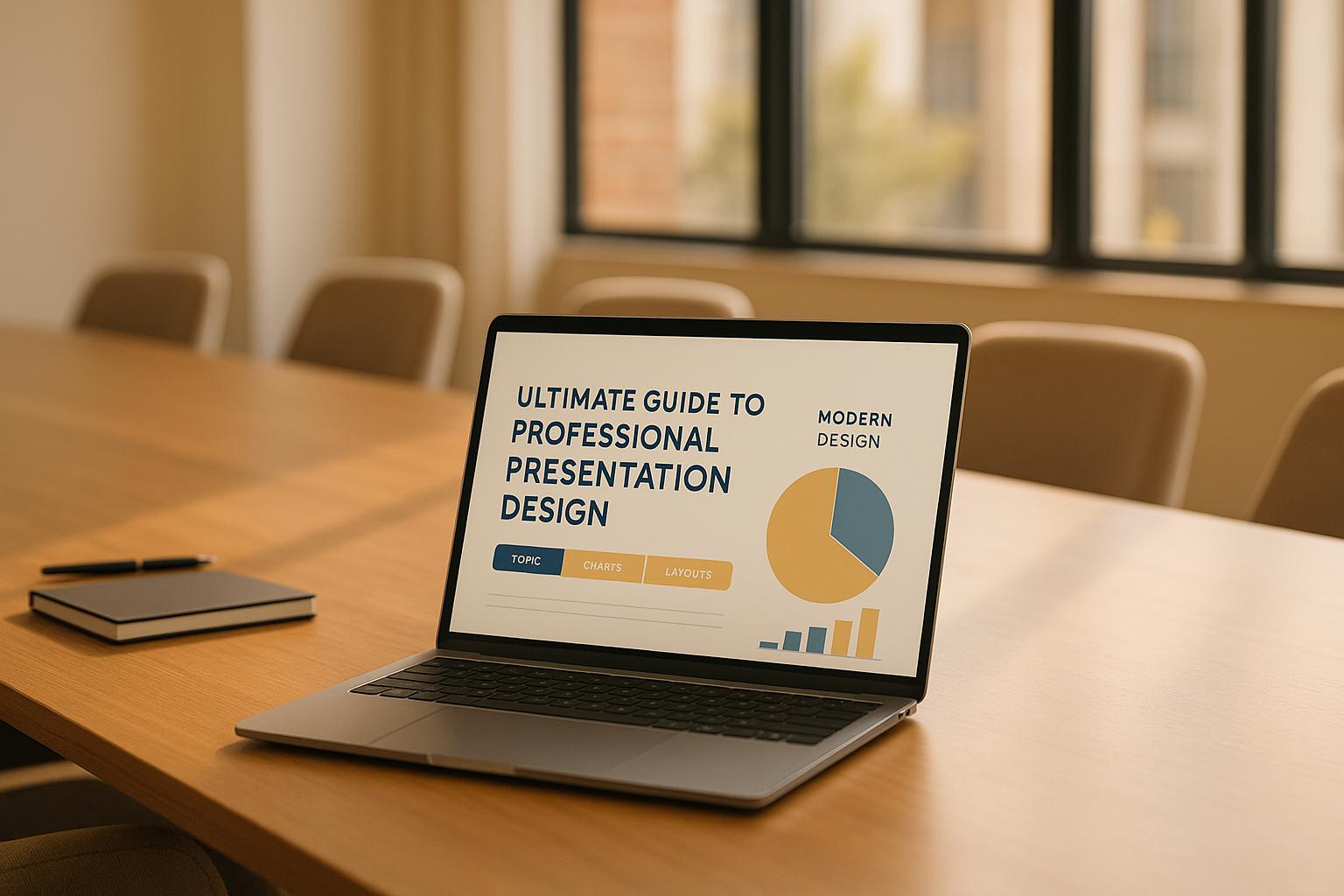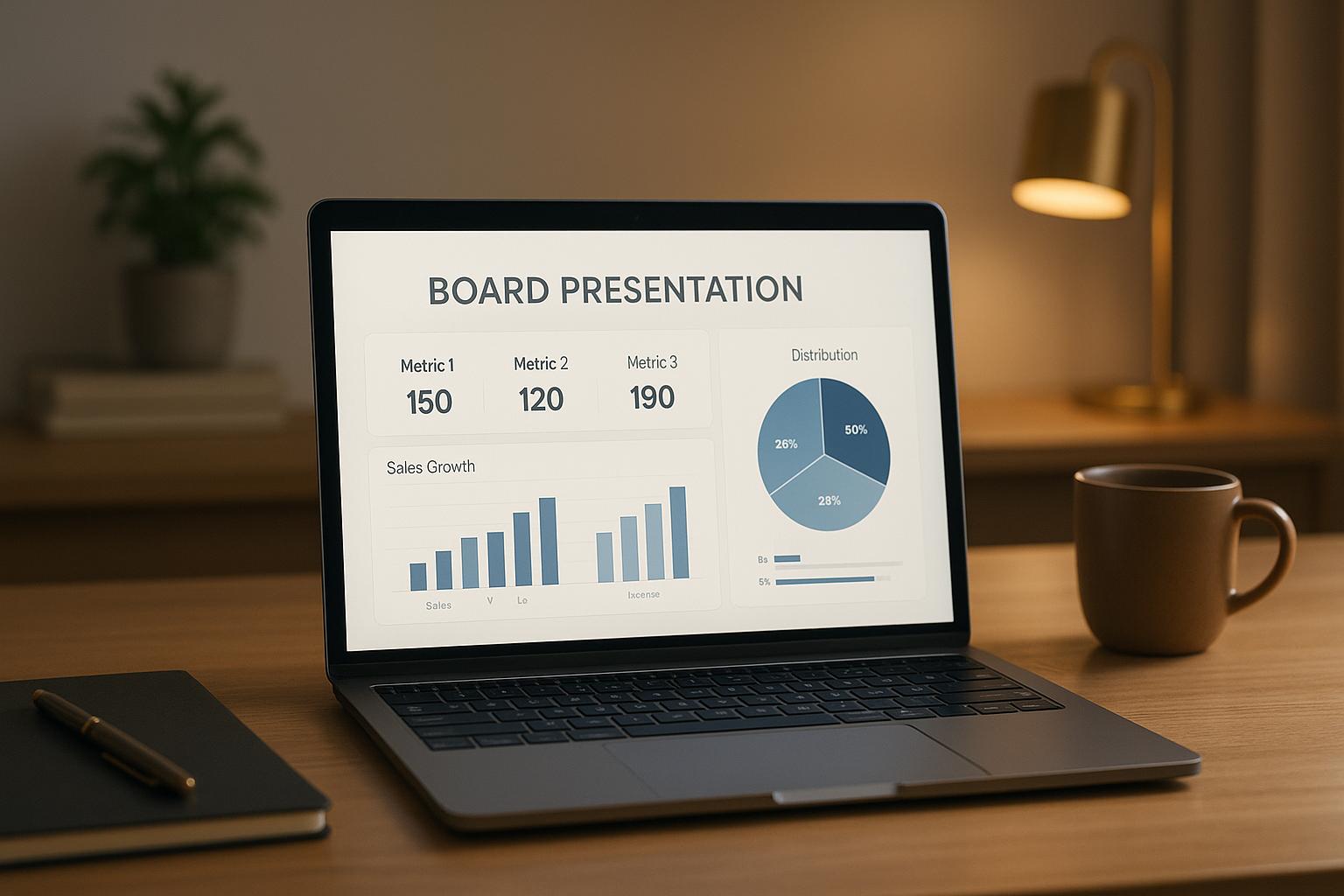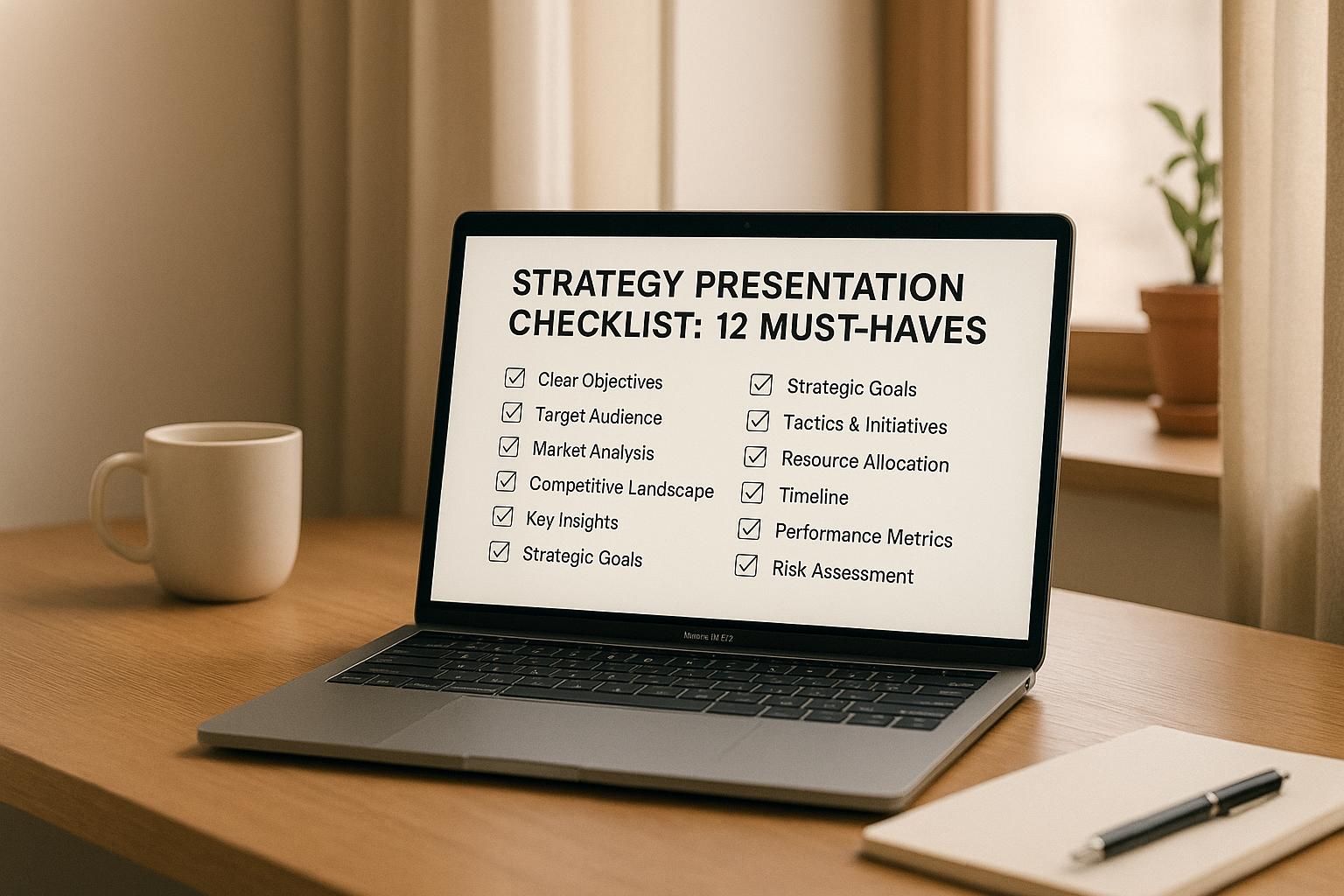AI has transformed proposal creation by automating time-intensive tasks like research, formatting, and drafting. This shift enables teams to focus on strategic thinking and client relationships while producing faster, higher-quality proposals. Key benefits include:
- Faster Research: AI scans market data and competitor insights in minutes, saving hours of manual effort.
- Consistent Quality: Tools like StratEngineAI apply proven frameworks (e.g., SWOT, Porter’s Five Forces) for polished, data-backed proposals.
- Effortless Drafting: AI tailors proposals to client needs, ensuring relevant content, proper tone, and logical flow.
- Professional Presentation: AI formats proposals with clean layouts, visuals, and branding, enhancing readability and impact.
- Streamlined Submission: AI ensures compliance with RFP requirements, tracks progress, and simplifies submission processes.
Generative AI for Proposal Development: Insights and Innovations (Part 1 of 2)
Understanding Proposal Development with AI
When making proposals, being fast and sharp matters - and AI helps by fixing common issues.
Common Proposal Development Problems
Old ways of making proposals often slow down because of long tasks like deep market and rival checks. This leaves little space for making insightful plans that shine. Moreover, different skills in teams can cause mixed-up messages, while hand-done formatting takes up a lot of time that could be used on making strong content. Some proposals work well, but others don't, making it hard to show a clean and neat brand look in all client talks.
For small consulting groups, the push is even bigger. Few resources and close deadlines often lead to quick and weak studies, placing them behind bigger rivals with stronger skills. These roadblocks show why AI-driven ways are becoming key.
How AI Makes Key Steps Simple
AI turns these challenges into chances by running key tasks, keeping things consistent, and making work flow better. Here's how:
- Speedy Research: AI tools can sort through vast market info very fast. Instead of going through reports and rival sites by hand, AI scans many data spots at once, picking up key details in moments.
- Steady Quality: AI setups like StratEngineAI use sound plans to make sure every proposal hits a high mark. This steadiness not only saves time but also builds trust with clients by giving top-notch, fact-based proposals every time.
- Quick Formatting: Skip the boring job of setting up slides or fixing fonts. AI makes neat, brand-right papers, letting teams put their energy into creating deep content instead of fixing design points.
Smaller groups, in particular, gain from AI's ability to give quick rival knowledge and deep market studies - things usually only big groups have. This makes the field even, giving small teams the tools they need to compete well.
Using AI for Research and Data Collection
AI speeds up more than just making plans; it changes how we look at study work too, often the long part of the job. Before, research meant going through papers, looking at what rivals do, and checking out market data - a big, hard job. AI makes this easy by getting data on its own, putting raw info in order, and making it helpful. This helps set the stage for a deeper look into markets and rivals with AI's help.
AI-Powered Market and Competitor Study
AI tools stand out when they sort big loads of data at once. By checking many places at once, they find patterns and clues that we might miss.
- Spotting market trends happens as they come. AI keeps an eye on market reports, news, and official files, seeing new trends and changes right away. This keeps plan teams in the know about the latest market moves without missing big news.
- Getting to know competitors gets more set. Rather than waiting for news now and then, AI looks at rival sites, news, money reports, and public talks to make full profiles. This tracks their big moves, ties, and place changes, giving a full view of the race field.
- Sorting data gets a big boost. AI doesn’t just pull in info - it puts it into clear, easy groups. Whether it’s market size, growth plans, or rules to think about, the data is arranged in a way that makes sense and is ready to use.
These neat clues help make sharper and better methods.
Making Data-Based Tips
Just data doesn't lead choices - it’s the context and useful clues that do. AI closes this gap by changing data into tips based on facts.
- Using a clear plan method gets better refined. AI spots, like StratEngineAI, use known ways to look at study facts, making sure nothing big is missed. This set way helps teams make full tips.
- Reasoning based on facts gets a lift. AI ties data right to tips, making clear links between market acts, how rivals are doing, and the plans we suggest. This smooth flow boosts how much we trust the plans.
- Checking risks reaches new depths. AI looks at many scenes at once, seeing how different market acts, how rivals might react, or rule changes could change the suggested plans. This adds a layer of seeing ahead, showing a deep get of likely hard spots.
- Backing it with numbers gets more on point. Rather than leaning on unclear talk, AI points out exact numbers - like market growth rates, how rivals are doing, or big marks - that back up the tips. This way, that is led by data, makes sure plans sound strong and real.
The result? Plans that offer more than just general advice. They give clear, data-back ways that fit well with what's really going on in the market, making it easy for clients to see the worth and go ahead with sureness.
sbb-itb-7250072
Making and Better Proposals with AI
After the study part is done, the next big step is to turn all that info into a proposal that the client likes. This can trip up even the best teams. Making a proposal that's both top-notch and sure to sway takes time, work, and a skill for getting what the client needs. Here, AI jumps in, turning this tough task into a smooth process. It takes on the hard part of making a draft, so the focus can stay on shaping the proposal to meet what the client wants. Moving from just data to a fine-tuned proposal is a key move in getting results.
Making Good Drafts
AI makes it easy to draft by making proposals that fit the setting, tone, and details of your project from your study. Here’s how it helps:
- Fit for the client: AI pulls out main needs from the RFP and builds the proposal to meet the client’s key points and what they look for. This cuts out the issue of one-size fits all drafts that don't hit the mark.
- Right tone: Different clients want different ways of talking. A new tech firm might like a laid-back, sure tone, while a big company may want a more stiff style. AI checks the client’s talks, site, and what's normal in their field to make sure the tone fits what they expect.
- Tech right: Proposals with hard tech details can have errors if made by hand. AI makes sure it's all correct, keeping trust by sticking to plans with no mix-ups.
- Flow of content: AI puts proposals in a clear order. It moves well from pointing out the client’s issue to showing answers and how to start them. This makes the proposals read like one full story, not chopped-up bits.
The end? A first draft that shows you know your stuff and cares about what the client wants. What used to take days can now be done in hours.
Better Proposal Look
Once the content is set, the next part is to make sure the proposal looks as pro as it reads. AI doesn’t just stop at drafting - it also boosts how it looks, making your proposals shine.
- Look of the page: AI uses the same fonts, spaces, and layout plans, making sure the document is easy to read and looks good. The right headers and text guide the reader smoothly through the content. A sharp look can make a strong first mark.
- Merging your brand: From company colors to logos, AI mixes in branding smoothly. The proposal looks pro and fits with your company’s look without being too pushy.
- Showing data well: Thick tables and raw data can be too much for readers. AI turns these into clear images like charts, graphs, and info pics. Budgets become easy to see, timelines are simple routes, and hard data turns into clear steps to take.
- Short Summary Help: Knowing that top folks read the summary most, AI makes it short but strong. It shows the main gains, what the project is about, and money matters in a way that's fast to read and simple to say yes to.
- Last Touch: AI takes care of the small stuff, like using the same words and getting dates right, to putting contact info, legal notes, and extra parts in place. It also makes sure there’s enough empty space for a neat, expert look.
When your plans look this good - both in what they say and how they look - clients can see the value of what you offer without getting lost in how it's set up. AI deals with the small things, letting your know-how shine bright.
Giving Proposals with AI Help
The last bit of making a proposal is when teams feel the most heat. Even top plans can mess up if key points are missed or if there’s no time left. This part needs clean and tight time use. AI helps by making this tough step neater and works better. It spots wrong things that people might miss and keeps all set for when it's time to send it in. This smart help makes the last bits of making a proposal way easier.
AI Checks for Rules and Quality
AI goes through each bit of your proposal deeply, making sure it fits the RFP's rules.
Deep checks for needs are what AI does best. It goes line by line with your proposal and the RFP. Say, if the RFP wants three case stories, AI checks they’re there. If it needs certain papers or team skills, AI checks they’re all listed right. These checks stop big errors, like losing a work offer from a small missed thing.
Even words in the file are another thing AI is good at. It points out if there are mix-ups, like different times for the project in parts or money totals that don't match up from start to end. AI also keeps words the same all through the file - like, if you start calling something "Phase 1", it won't turn into "Stage 1" somewhere else.
Sorting and word rule keeping is done without fuss. Many RFPs have firm rules about text style, how long it can be, and how it should be set up. AI checks that these rules are followed while keeping a clean and right tone through the whole thing.
In the last quality look-over, AI finds things like wrong word use, typos, and mix-ups in how it looks that normal spell-check tools might not catch. It also checks cross-references - if you say "see Section 4.2", AI makes sure that that part is there and has the right info.
Once it’s sure the quality and rules are right, AI moves to make sending it smoother.
Handling Sending and Keeping Track
After making sure your proposal meets all needs, AI takes over the steps for sending, keeping everything on line.
Set timelines are made to map the sending steps. AI works out how long each review should take and when the last OK is needed, adding extra time for any last-second changes. For instance, if your proposal is due at 3:00 PM on Friday, AI might plan to send it by Thursday noon to dodge any last tech troubles.
Live progress watching helps teams keep up. AI sees which parts are done, spots tasks left, and follows OKs. Team folks get quick reminders of their due times, while project bosses see the latest progress without constant checks.
Managing the sending portal is easier with AI. It fills needed spots, sorts files, and even sends proposals early to dodge portal jams, which happen often near due times.
Chasing up is smooth and easy. AI keeps an eye on usual times when clients write back, sets reminders for checking in, and lines up what's needed for any big talks or extra info. It also holds a full list of what went out, when, and how.
Keeping track of versions becomes a snap. AI keeps neat logs of the last copy sent out, watches over any changes made during final edits, and makes sure the whole team knows just what the client got. This helps a lot if problems pop up later or if the proposal needs to be looked at again for other chances.
With AI taking care of the details, the whole process feels neat and on point. Your team can pour energy into making the proposal better, while AI makes sure it all goes out right and on time.
Conclusion: Using AI for Better Proposal Development
AI has reshaped how proposals come together, turning what used to take weeks into a matter of hours. By speeding up draft creation and organizing essential resources in one place, it allows teams to focus their energy on creating clear, compelling proposals instead of getting bogged down by repetitive tasks [1][2].
StratEngineAI offers an all-in-one solution that handles everything - from research to the final presentation. It builds on the strategic planning practices we've explored in this guide, making the process smoother and more effective. With AI tackling the routine work, teams can dedicate their time to crafting proposals that stand out.
Now’s the time to bring these AI tools into your workflow and see the difference they can make in efficiency and results.
FAQs
How does AI help create proposals that align with specific client needs and expectations?
AI plays a pivotal role in creating proposals that resonate with client needs by sifting through extensive data to pinpoint their specific challenges, preferences, and priorities. This allows for the development of tailored content that speaks directly to what each client values most.
Using advanced pattern recognition and predictive analytics, AI can spot trends and forecast client expectations. This ensures proposals remain not just relevant but also strategically aligned, increasing their effectiveness and appeal.
What challenges might arise when using AI for proposal development, and how can they be addressed?
Using AI to develop proposals comes with its own set of challenges, including inaccuracies, bias, ethical concerns, and privacy risks. These problems often stem from low-quality training data or a lack of proper oversight, which can lead to mistakes or unintended outcomes.
To tackle these hurdles, incorporating human oversight at critical points is crucial. AI systems should be trained using diverse, high-quality datasets, and organizations need to establish clear governance policies to ensure transparency and fairness. Conducting regular reviews and risk assessments can further help identify and address potential problems, allowing AI tools to improve the proposal process without compromising integrity or reliability.
How can small consulting firms use AI to create better proposals quickly?
Small consulting firms can use AI tools to simplify their proposal creation process, making it quicker, more affordable, and tailored to each client's needs. By automating tasks like research, content drafting, and formatting, AI frees up time for these firms to concentrate on providing strategic, client-focused solutions - without the heavy resource demands that larger firms often face.
This streamlined approach not only saves valuable time but also improves proposal quality by integrating data-driven insights and polished formatting. With AI, smaller firms can compete more effectively, delivering professional and compelling proposals that meet the high standards of clients and stakeholders alike.


